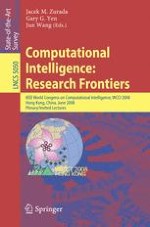The 2008 IEEE World Congress on Computational Intelligence (WCCI 2008), held during June 1–6, 2008 in Hong Kong, China, marked an important milestone in advancing the paradigms of the new fields of computational intelligence. As the fifth event in the series that has spanned the globe (Orlando-1994, Anchorage-1998, Honolulu-2002, Vancouver-2006), the congress offered renewed and refreshing focus on the progress in nature-inspired and linguistically motivated computation. Most of the congress’s program featured regular and special technical sessions that provided participants with new insights into the most recent developments in the field. As a tradition, in addition to the parallel technical sessions, WCCI holds a series of plenary and invited lectures which are not included in the congress proceedings. As its predecessors, at WCCI 2008, 20 expert speakers shared their expertise on broader, if not panoramic, topics spanning a diverse spectrum of computational intelligence in the areas of neurocomputing, fuzzy systems, evolutionary computation, and adjacent areas. Thanks to their time and expertise, we endeavored to offer this volume to attendees directly at the congress and the general public afterwards.
